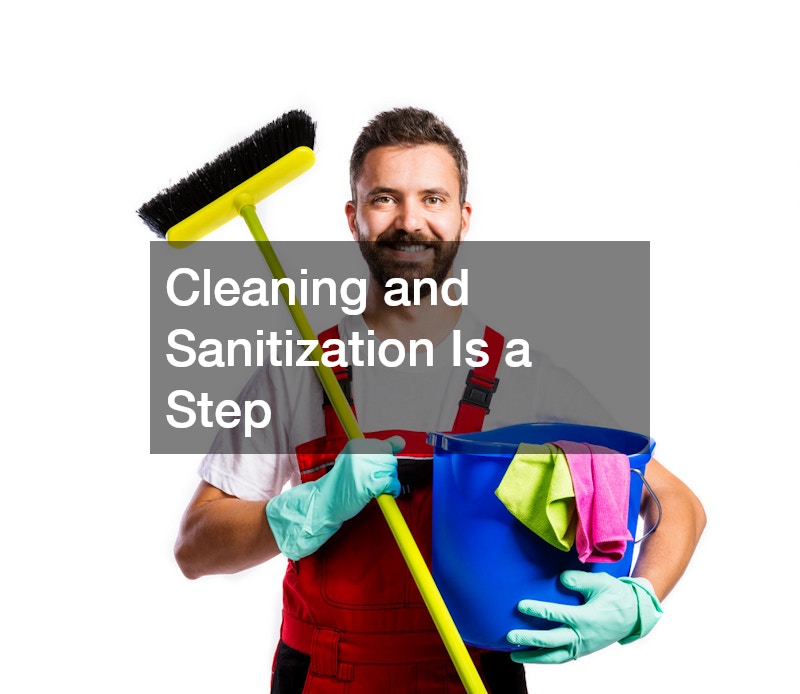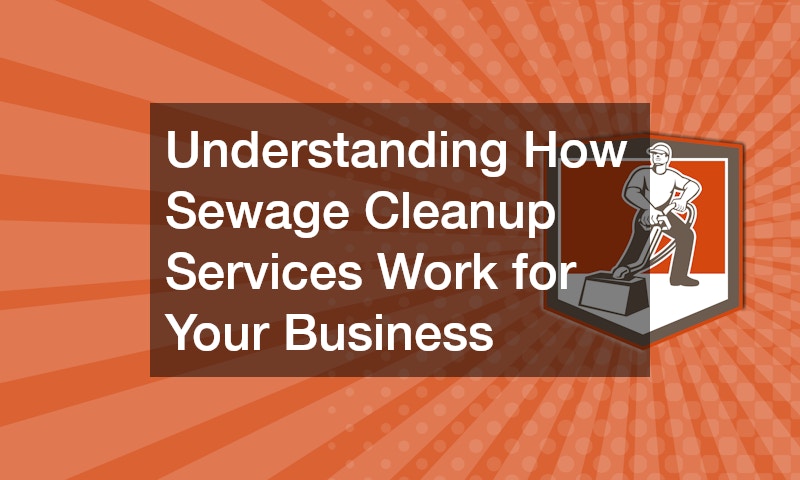When your business faces a sewage backup or spill, it can feel overwhelming, especially given the potential damage to property, health risks, and disruption to daily operations. Sewage cleanup is a specialized service that ensures your business can return to normal quickly and safely. Understanding how these services work can help you take the right steps in the unfortunate event of a sewage disaster.
In this article, we’ll explore the process of sewage cleanup services, the importance of professional assistance, and tips to protect your business from future sewage problems.
The Importance of Professional Sewage Cleanup
Sewage contains harmful bacteria, viruses, and chemicals that can endanger the health of your employees, customers, and anyone else exposed. In addition to posing serious health risks, sewage damage can compromise the structure of your building if not cleaned up properly.
Professional sewage cleanup services are critical because they handle the hazardous waste appropriately, using specialized equipment, techniques, and protective gear. This ensures the safe and effective removal of contaminated water, solid waste, and harmful microorganisms. By leaving this task to experts, you avoid the risk of contamination spreading further, which could lead to more costly repairs.
The Sewage Cleanup Process
Sewage cleanup typically follows a structured process to ensure thorough decontamination and safe restoration. Here’s an outline of what you can expect when hiring a professional service:
1. Assessment and Inspection
The first step in sewage cleanup is an initial assessment of the situation. Professionals will inspect the affected areas, measure the extent of the contamination, and determine the source of the problem. This evaluation helps the cleanup team decide on the best course of action.
In some cases, the issue may stem from your business’s plumbing, while in others, it could be due to external factors like citywide sewage system failures or flooding. The inspection process helps identify the root cause so that both cleanup and preventative measures can be properly executed.
2. Safety Precautions and Containment
Safety is a top priority in any sewage cleanup. The service team will take steps to contain the contaminated area to prevent the spread of sewage to unaffected parts of the building. This may involve shutting off water lines, isolating certain rooms, or using barriers and protective equipment.
Workers will also don personal protective equipment (PPE), including gloves, masks, and waterproof suits, to protect themselves from harmful pathogens in the sewage.
3. Removal of Contaminated Materials
Once the area is contained, the next step is to remove all contaminated materials. This includes standing sewage water, soaked furniture, damaged flooring, and drywall. Any items that have been exposed to sewage and cannot be properly sanitized will be disposed of. This part of the process is critical to eliminating health risks and preventing further structural damage.
The cleanup team will also use specialized equipment like pumps, vacuums, and industrial-strength cleaners to ensure every trace of sewage is removed from the premises.
4. Cleaning and Sanitization
After contaminated materials are cleared away, the affected area will be thoroughly cleaned and disinfected. This process involves using professional-grade cleaning agents and deodorizers designed to kill bacteria, viruses, and other harmful organisms present in sewage.
High-contact surfaces like walls, floors, countertops, and door handles will be scrubbed and sanitized to ensure that no harmful pathogens remain. Air filtration devices may also be used to remove any lingering odors or airborne contaminants from the space.
5. Drying and Dehumidification
Moisture control is essential in the sewage cleanup process. After sanitizing the affected area, the team will begin drying and dehumidifying the space to prevent mold growth and further water damage. High-powered fans, dehumidifiers, and air movers are used to remove excess moisture from the air and materials.
Drying is a crucial step in avoiding secondary damage, such as mildew or mold, which can grow quickly in damp environments. Mold poses additional health risks, so it’s important to ensure your business space is thoroughly dried before reopening.
6. Final Inspection and Restoration
Once the cleanup is complete, a final inspection is conducted to ensure that all sewage, moisture, and contaminants have been effectively removed. Any structural repairs or replacements needed, such as new drywall or flooring, will be completed during this phase.
At the end of the restoration process, your business should be safe and fully operational again. The cleanup team will also provide recommendations on how to prevent future sewage issues, whether through regular plumbing maintenance or additional flood protection measures.
Benefits of Hiring Professional Sewage Cleanup Services
Dealing with sewage is not something any business owner should handle on their own. Here are a few key benefits of hiring professional sewage cleanup services:
Health and Safety: Professionals follow strict safety protocols to protect your business and its occupants from the dangerous pathogens found in sewage.
Proper Disposal: Professionals have the equipment and knowledge to dispose of hazardous waste in compliance with local regulations.
Quick Response Time: Most sewage cleanup companies offer 24/7 emergency services, ensuring that the issue is addressed quickly to minimize damage and downtime.
Thorough Cleanup: Professionals have the tools and expertise to thoroughly clean, disinfect, and dry your business, preventing secondary damage like mold growth.
Damage Prevention: By identifying the source of the sewage problem, professionals can offer solutions to prevent future incidents, whether that involves fixing plumbing issues or installing flood prevention measures.
Watch the video above to learn more about how sewage cleanup companies work for your business!
.



